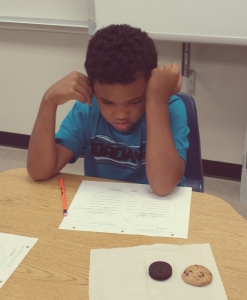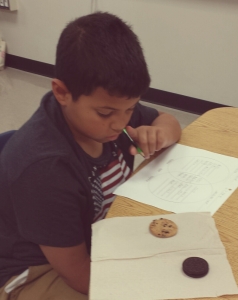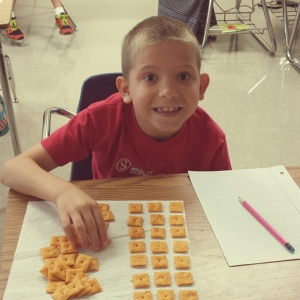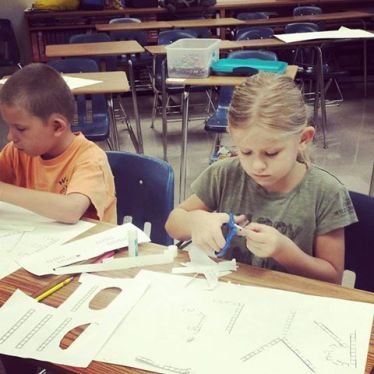Lesson Topic:
“Exploring Compare & Contrast” – The purpose of this lesson was to review comparing & contrasting within the context of reading. Together as a class, we compared and contrasted the two main characters in our read-aloud, Miss Nelson and Miss Viola Swamp.
Goal for Students On-Level:
Given both an explanation and a visual representation of the reading skill, guided practice, a Venn diagram, and two different cookies, STUDENTS will independently complete a two-circle Venn diagram, comparing and contrasting the two cookies, with at least 80% accuracy, within a 45-minute reading lesson.
Goal for Students Needing Small-Group Instruction:
Given both an explanation and a visual representation of the reading skill, guided practice, a Venn diagram, and two different cookies, STUDENTS will complete, with help from the paraprofessional, a two-circle Venn diagram, comparing and contrasting the two cookies, with at least 80% accuracy, within a 45-minute reading lesson.
Date Taught:
Tuesday, July 28, 2015
What went well?
My students were already pretty familiar with Venn diagrams. Therefore, I didn’t have to spend too much time frontloading them with its purpose and design. I also loved how engaged my students were during our interactive read-aloud. This energy definitely spilled over into our guided practice. Students were very willing to participate as we generated, together, a Venn diagram comparing and contrasting Miss Nelson and Miss Viola Swamp. This whole-group activity also allowed me to informally assess their comprehension of the read-aloud because we were constantly referring back to the text. In addition, using the cookies as manipulatives excited students, but more importantly, gave them time to practice the skill within a real-world context.
What did not go as planned?
Not all of my students met their goals for this lesson. I think this is partly a result of limited time and our snack break. Additionally, some of my students had trouble organizing their notes on the Venn diagram. I really wanted my students to work alone, with as little guidance as possible, on the cookie assignment. However, I think that I should have scaffolded them even more during this activity. For example, I should have highlighted that when completing a Venn diagram, use bullet points instead of complete sentences.
How to change for subsequent lessons:
Ideally, this lesson would have been one of a series of mini-lessons in my Reader’s Workshop. Instead of using the cookie Venn diagram as a summative assignment, I would have preferred to use this activity as a pre-assessment prior to introducing the skill. And for my more summative practice, I would have my guided reading groups work together to generate a poster-sized Venn diagram, comparing and contrasting characters, themes, or settings within their current novels. Additionally, I would like to use the “Venn Diagram” app by the International Reading Association as a summative, formal assessment for a unit on compare and contrast. Using this app and only one account, all students can create and publish a Venn diagram for the rest of the class to explore.
Final Thoughts:
This past month has flown by. I really enjoyed my time at the Summer Learning Place. Working with such a small-group of students was very refreshing. Not to mention, their sweet personalities. At first, I was skeptical about the differences that just four weeks could make. But after post-assessing my students, I really can see so much improvement. Giving just one example, one of my little ones increased her words per minute from fifty-eight to ninety-four. Her final goal was to reach sixty-four. She went over by thirty words—and the reading passage was harder! Talk about a proud teacher.
I established three goals at the start of this experience: 1) Effective, 2) Flexible 3) Teachable. I think I achieved them all. By employing a variety of assessments, I was able to tailor my instruction to effectively meet the specific learning needs of my students. Some of my students had different areas for targeted growth. I successfully noted those needs and did my best to meet them, through modifications and adjustments. I learned so much during this experience–about myself, about my students, and about my pedagogy. I have a better understanding of my own strengths and weaknesses. I still have many questions, but I am excited about both pursuing and sharing many of the resources that have been introduced to me.







